
Airports are more than just transit hubs—they’re essential infrastructures for efficient air travel. In 2025, with air traffic booming, the vast areas of major US airports enable them to handle immense passenger volumes and cargo operations.
This article explores the largest airports in the United States by area, detailing their significance and role in the aviation ecosystem.
From connecting continents to supporting regional economies, these airports demonstrate the value of space and efficient design. Let’s delve into how they contribute to smoother travel experiences and robust airline operations.
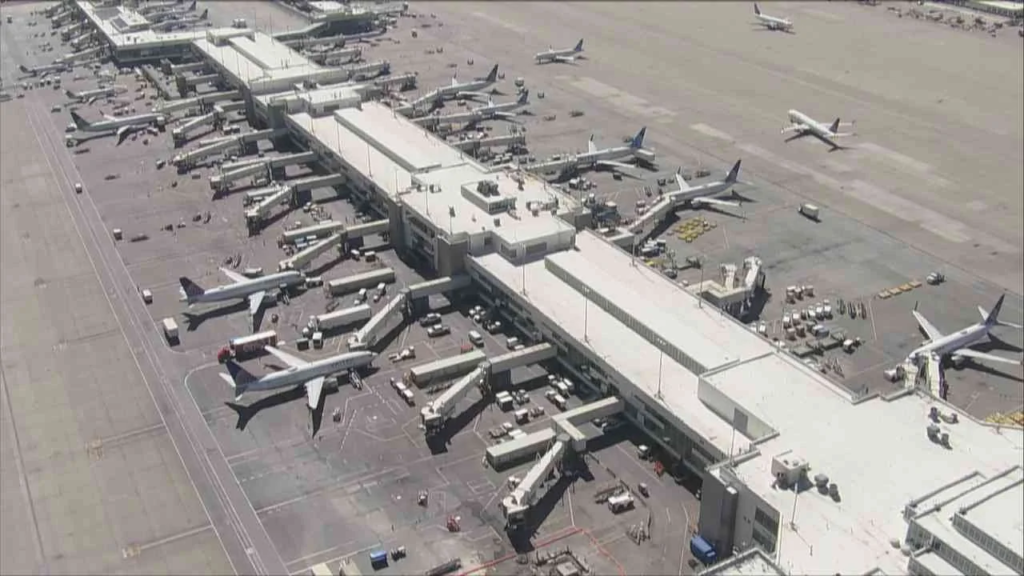 Photo: Denver Airport
Photo: Denver AirportTop 10 Largest Airports in the United States
Airport land areas are not mere statistics; they represent operational capabilities. Larger airports can accommodate high passenger traffic, handle extensive cargo, and host multiple terminals and support facilities.
Below is a detailed look at the 10 largest airports in the United States by area in 2025.
| 1 | Denver International Airport | Denver, Colorado | 137.26 | 69 million |
| 2 | Dallas/Fort Worth International | Dallas, Texas | 69.01 | 73 million |
| 3 | Orlando International Airport | Orlando, Florida | 53.88 | 54 million |
| 4 | Washington Dulles International | Dulles, Virginia | 52.60 | 24 million |
| 5 | George Bush Intercontinental | Houston, Texas | 40.47 | 45 million |
| 6 | Salt Lake City International | Salt Lake City, Utah | 31.16 | 27 million |
| 7 | O’Hare International Airport | Chicago, Illinois | 30.86 | 83 million |
| 8 | San Francisco International | San Francisco, CA | 21.07 | 50 million |
| 9 | John F. Kennedy International | New York City, NY | 21.04 | 62 million |
| 10 | Detroit Metropolitan Airport | Detroit, Michigan | 19.63 | 36 million |
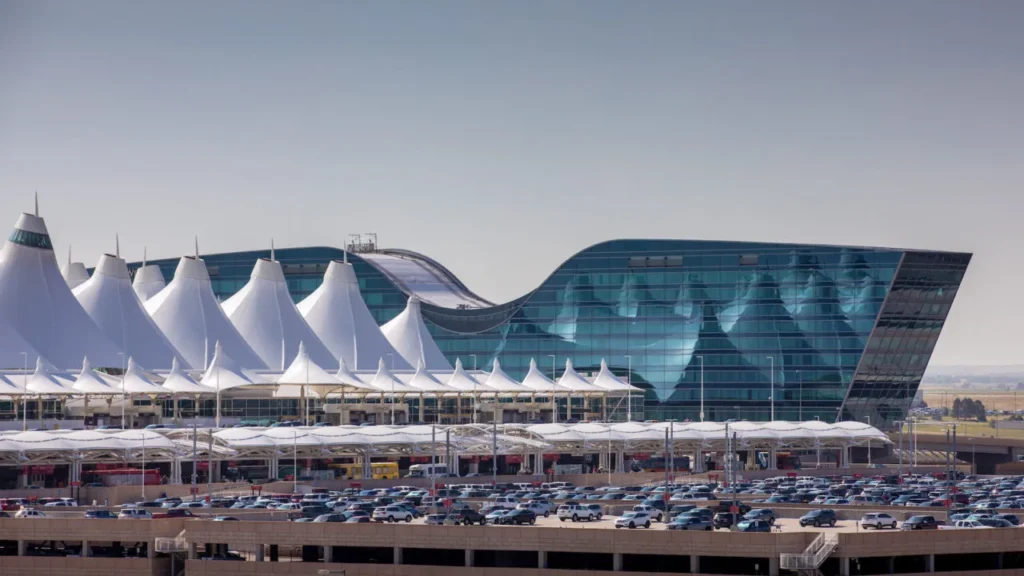 Photo: Denver International Airport
Photo: Denver International Airport1. Denver International Airport (DEN)
- Area: 137.26 sq.km
- Passenger Traffic: 69 million (2023)
- Location: Denver, Colorado
Denver International Airport (DEN) is the largest airport in the United States by land area and one of the most expansive globally.
Known for its white-tented architecture resembling the Rocky Mountains, it serves as a critical hub for domestic and international flights.
It supports efficient cargo operations and has significant room for expansion, solidifying its role as a major gateway to the western U.S.
 Photo: Dallas International Airport (DFW)
Photo: Dallas International Airport (DFW)2. Dallas/Fort Worth International Airport (DFW)
- Area: 69.01 sq.km
- Passenger Traffic: 73 million (2023)
- Location: Dallas, Texas
Serving as a primary hub for American Airlines (AA), Dallas/Fort Worth International Airport (DFW) operates with five terminals and multiple runways.
Its strategic location between Dallas and Fort Worth enables seamless domestic and international connectivity.
The airport features extensive parking facilities, efficient ground services, and advanced cargo handling infrastructure.
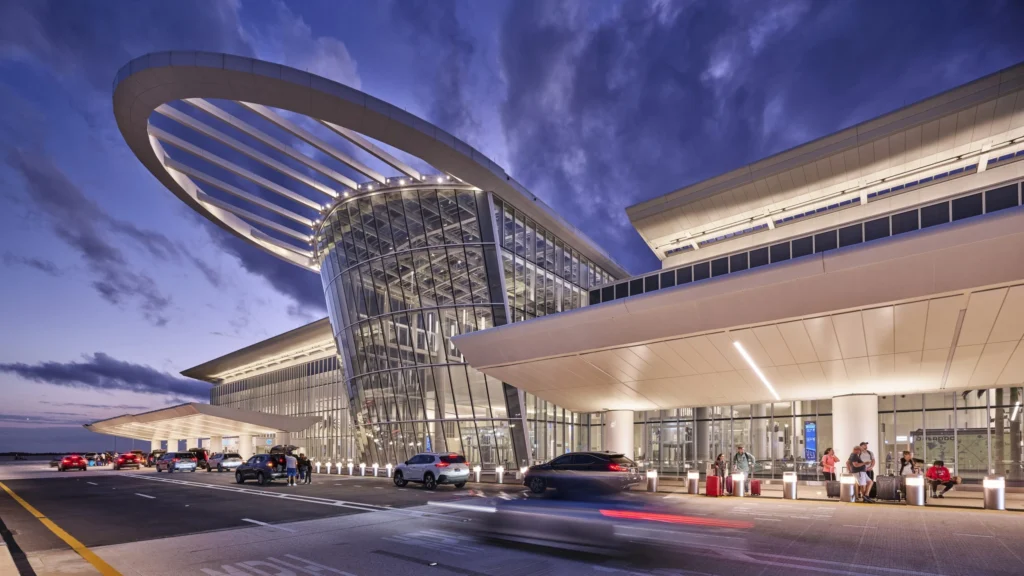 Photo: HNTB
Photo: HNTB3. Orlando International Airport (MCO)
- Area: 53.88 sq.km
- Passenger Traffic: 54 million (2023)
- Location: Orlando, Florida
Orlando International Airport (MCO) is a gateway to Florida’s iconic attractions, including Walt Disney World and Universal Studios.
Its expansive layout supports millions of tourists annually, with state-of-the-art terminals, ample parking, and proximity to major highways. It also has a robust cargo operation, complementing its passenger services.
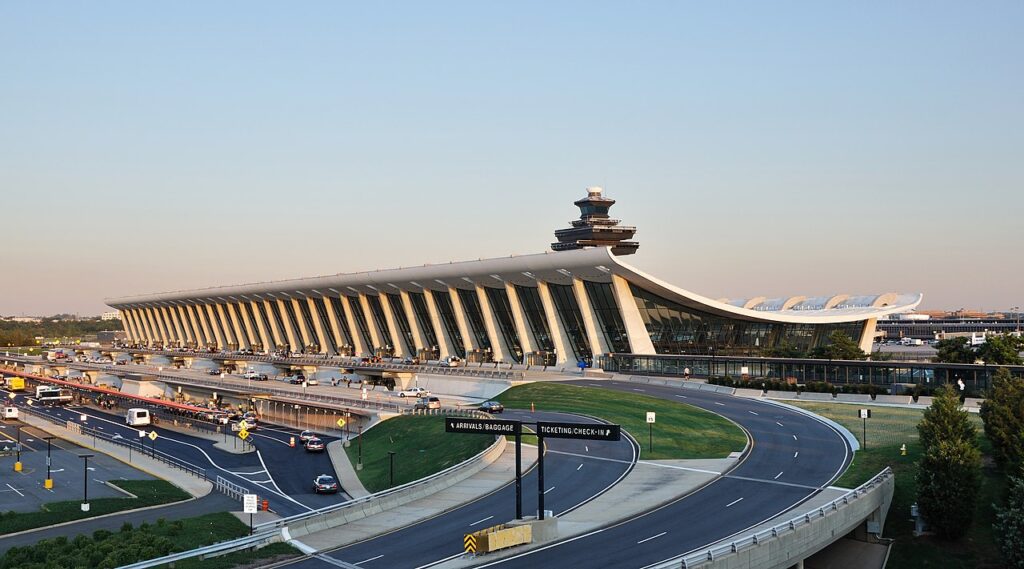 Photo: By Joe Ravi, CC BY-SA 3.0, https://commons.wikimedia.org/w/index.php?curid=16400251
Photo: By Joe Ravi, CC BY-SA 3.0, https://commons.wikimedia.org/w/index.php?curid=164002514. Washington Dulles International Airport (IAD)
- Area: 52.60 sq.km
- Passenger Traffic: 24 million (2023)
- Location: Dulles, Virginia
Located near the nation’s capital, Washington Dulles International Airport (IAD) features a futuristic terminal design by Eero Saarinen. Its vast area enables efficient international operations and frequent transatlantic flights.
The airport is a hub for United Airlines (UA) and plays a significant role in connecting D.C. to global destinations.
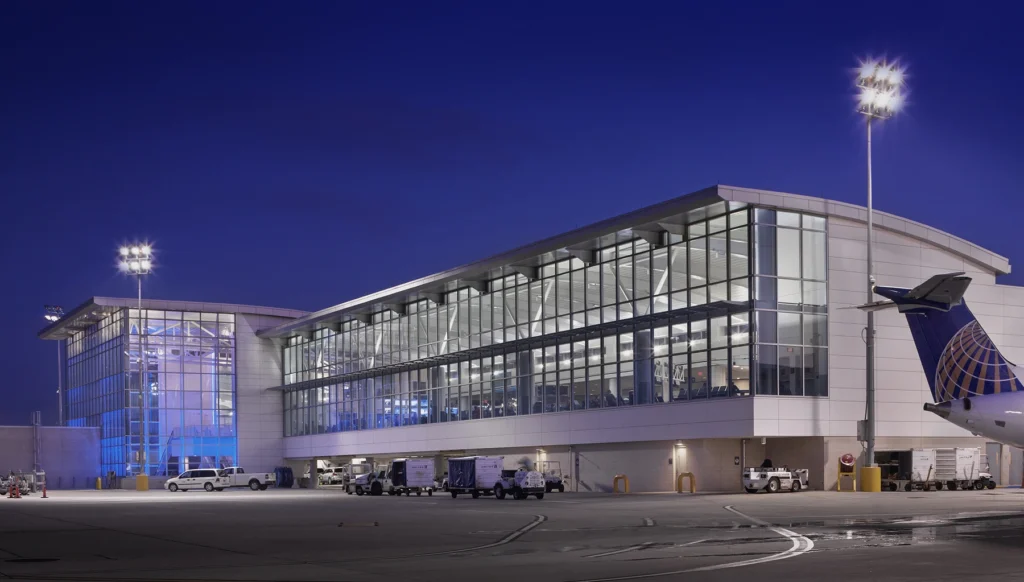 Photo: Skansha
Photo: Skansha5. George Bush Intercontinental Airport (IAH) in Houston
- Area: 40.47 sq.km
- Passenger Traffic: 45 million (2023)
- Location: Houston, Texas
Named after the 41st U.S. president, George Bush Intercontinental Airport (IAH) connects Houston to major global cities, particularly in Latin America. Its layout supports five terminals, extensive cargo facilities, and advanced runway systems.
The airport is a primary hub for United Airlines (UA) and caters to both passenger and freight operations.
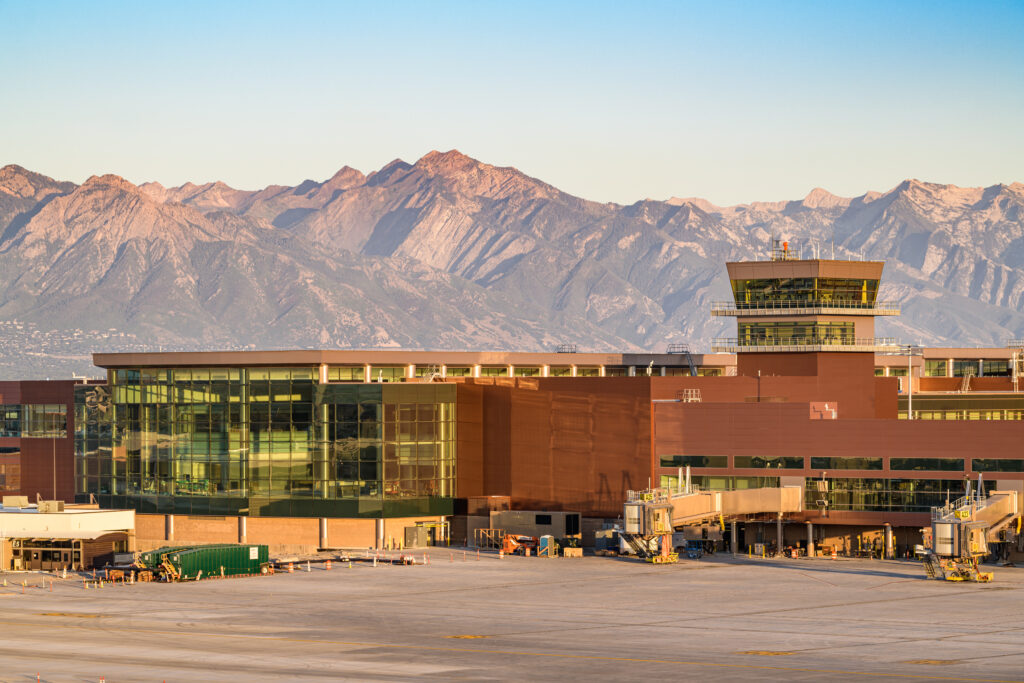 Photo: Salt Lake City International Airport
Photo: Salt Lake City International Airport6. Salt Lake City International Airport (SLC)
- Area: 31.16 sq.km
- Passenger Traffic: 27 million (2023)
- Location: Salt Lake City, Utah
Salt Lake City International Airport (SLC) is a hub for Delta Airlines (DL), facilitating domestic and international travel. The airport recently underwent extensive renovations, including a new terminal and enhanced runway systems.
Its strategic location makes it a vital connection point for the Western United States.
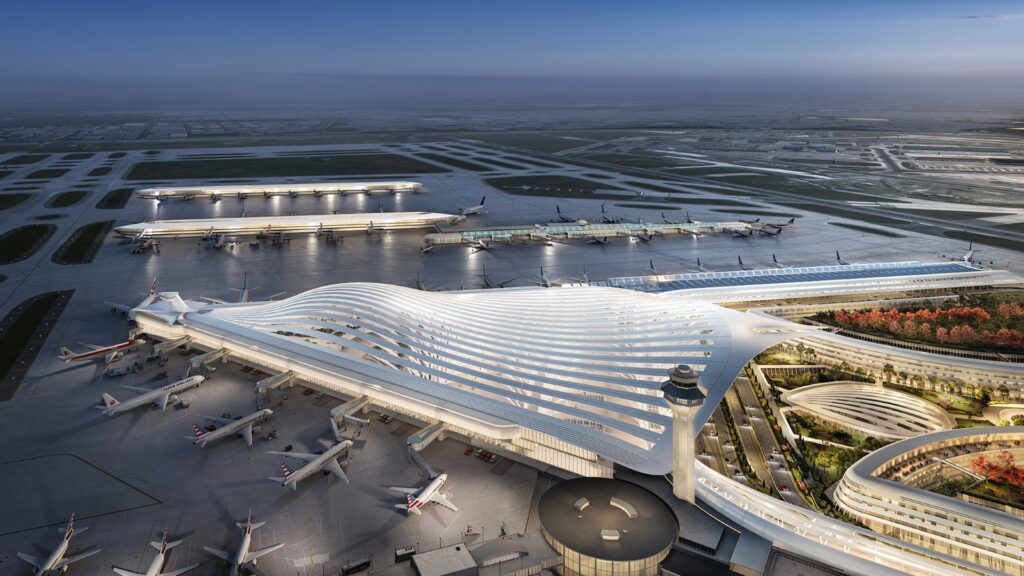 Photo: Santiago Calatrava
Photo: Santiago Calatrava7. Chicago O’Hare International Airport (ORD)
- Area: 30.86 sq.km
- Passenger Traffic: 83 million (2023)
- Location: Chicago, Illinois
One of the busiest airports globally, O’Hare (ORD) is renowned for its extensive terminal network and efficient runway operations.
It serves as a critical hub for both American Airlines (AA) and United Airlines (UA). The airport plays a pivotal role in connecting the Midwest to domestic and international destinations.
 Photo: Wally Gobetz | Flickr
Photo: Wally Gobetz | Flickr8. San Francisco International Airport (SFO)
- Area: 21.07 sq.km
- Passenger Traffic: 58 million (2023)
- Location: San Francisco, California
Strategically located along the Pacific coast, San Francisco International Airport (SFO) is a key gateway for transpacific flights. The airport features four terminals, advanced cargo facilities, and a commitment to sustainability. It offers a range of luxury services and is known for its eco-friendly initiatives.
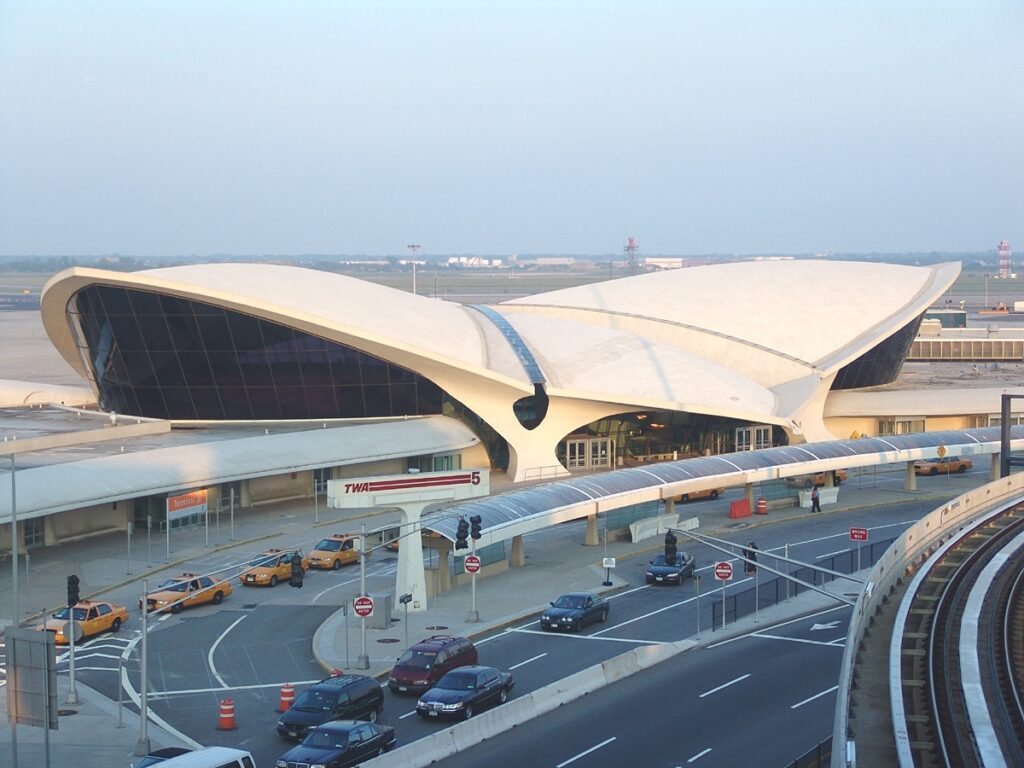 Photo: File: New York – John F. Kennedy International (Idlewild) (JFK – KJFK) AN0619542.jpg – Wikimedia Commons
Photo: File: New York – John F. Kennedy International (Idlewild) (JFK – KJFK) AN0619542.jpg – Wikimedia Commons9. John F. Kennedy International Airport (JFK) in New York
- Area: 21.04 sq.km
- Passenger Traffic: 62 million (2023)
- Location: New York City, New York
John F. Kennedy International Airport (JFK) is a vital international gateway to the United States, connecting New York to cities worldwide.
The airport has six terminals and handles a high volume of passenger and cargo traffic. It is a hub for multiple airlines, including Delta and American Airlines.
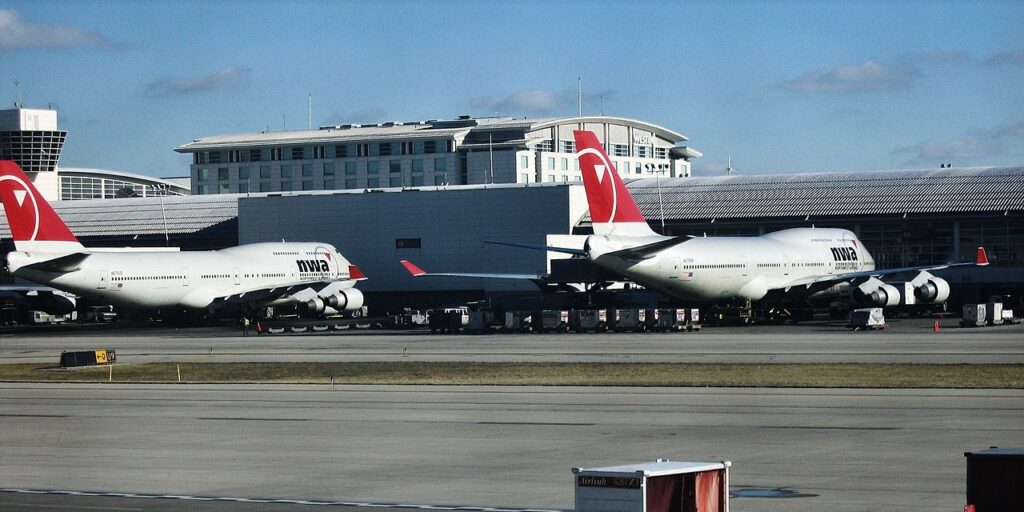 Photo: By qwesy qwesy, CC BY 3.0, https://commons.wikimedia.org/w/index.php?curid=58940456
Photo: By qwesy qwesy, CC BY 3.0, https://commons.wikimedia.org/w/index.php?curid=5894045610. Detroit Metropolitan Airport (DTW)
- Area: 19.63 sq.km
- Passenger Traffic: 36 million (2023)
- Location: Detroit, Michigan
Detroit Metropolitan Airport (DTW) is a major hub for Delta Airlines and a key connection point for the Midwest. It features modern terminals, efficient runways, and advanced facilities for both passengers and cargo. The airport supports the economic growth of Detroit and its surrounding regions.
 Photo: Foster Epstein Moreno
Photo: Foster Epstein MorenoBottom Line
These expansive airports are pivotal to the U.S. transportation network. Their layouts enable efficient passenger movement, reduced delays, and enhanced cargo handling.
Furthermore, their ability to expand infrastructure, such as lounges, terminals, and parking facilities, ensures they meet evolving demands.
The largest United States airports by area are more than engineering marvels, they are vital to global connectivity and economic growth. From facilitating international commerce to enriching travel experiences, these airports embody the progress of modern aviation.
Stay tuned with us. Further, follow us on social media for the latest updates.
Join us on Telegram Group for the Latest Aviation Updates. Subsequently, follow us on Google News
Top 10 Busiest Airports in the World, No.4 Will Surprise You
The post Top 10 Largest Airports in the United States by Area in 2025 appeared first on Aviation A2Z.


















